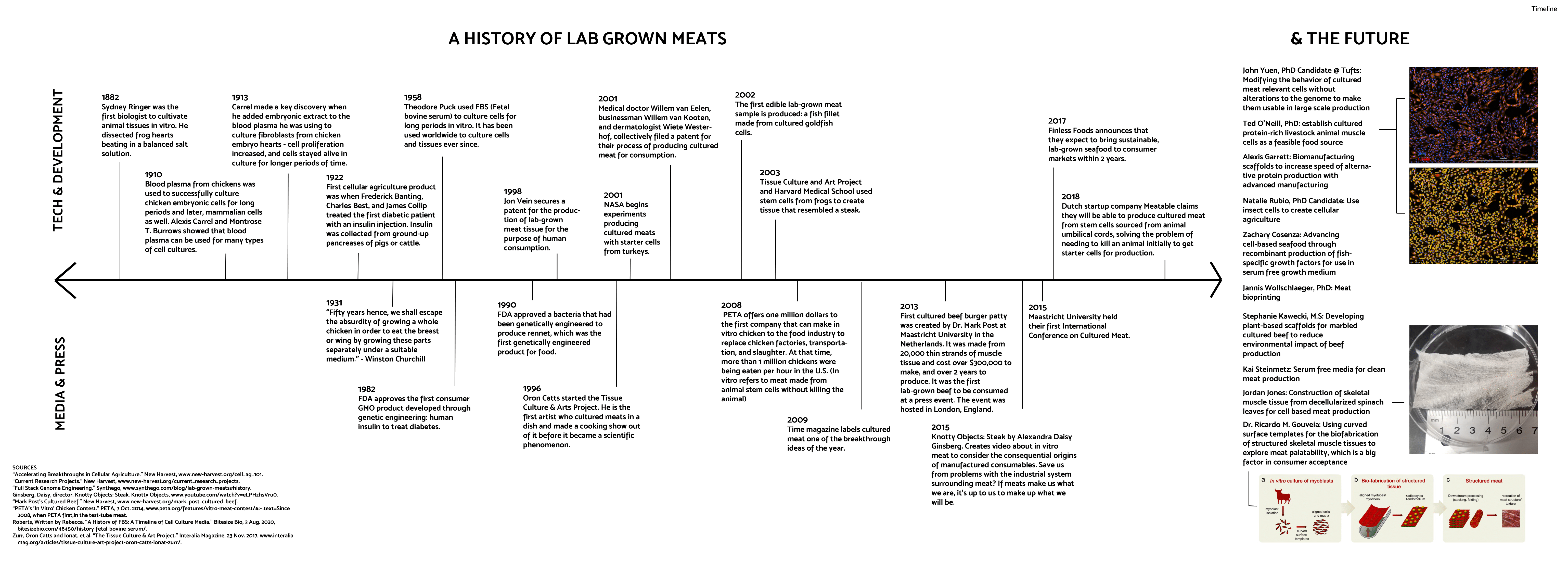How can we create beef without cows? How can we rethink the ways we manage waste? How can we redesign our food systems to be more sustainable and conscious of the issues present within it?

→ TRANSCRIPT:
Today, almost 30% of the world’s ice free land is used to raise livestock, causing ⅘ of deforestation in the Amazon Rainforest and producing as much sewage waste and water pollution as a small city. Globally, cattle is responsible for 6% of all greenhouse gas emissions by releasing methane and nitrous oxide, which is one fourth of emissions from all agriculture. They can easily fill up a 50 gallon sized garbage bag full of methane every day.
One solution to these problems is through artificial beef, which can be created in labs or from plant based fats. Plant based meats use a process of heating, cooling, and pressure to create the fibrous texture of meat, while Lab grown meats involve injecting muscle tissues and stem cells from an animal into a cell culture, allowing the cells to grow outside the animal’s body.
Yet there are many limitations with lab grown meats. Plant based meats lack much of the flavor that is unique to normal meats, and lab grown meats are unable to be eaten by those on meat free diets. While there is a decrease in methane production from livestock, these chemical processes result in an equal amount of carbon dioxide, still contributing to global warming.
Now, imagine meat without these environmental effects. But why stop there?
The current American food system wastes about 40% of its food, accumulating to 125 to 160 billion pounds per year. Much of this is perfectly edible and nutritious as it consists of produce that is too ugly to sell, food that is “expired”, or leftovers from meals. On a larger scale, food makes up the majority of U.S. landfills.
We can redesign lab made meats to be grown from the carbon and fat cells found in agricultural waste, food waste, and even plastics.
As one of the biggest waste problems, plastic contains a surprising amount of carbon, hydrogen, oxygen, nitrogen, chlorine, and sulfur, all of which can be found within our own bodies. Even after foods and ugly produce are cooked or thrown away, they still contain protein, carbohydrates, and fats, all of which are necessary to our everyday diets. We can create beef without cows the same way in-vitro and plant based meats are developed by extracting these carbon based molecules and fats to create a meat that people of all diets can eat.
This meat would allow us to eat away the 7 billion tons of garbage in landfills and deep oceans. One that would decrease the waste we generate and clean up past waste. A meat that would clean up the effects of our current meat industry. But most importantly, a meat that would make it everyone’s responsibility to manage their waste and impact on the planet.
Almost every design we encounter today has evolved in a continuum. Even if it is the most disruptive or seemingly most-unimaginable technology, its origins are shaped within a long history of human intentions, desires, or sometimes fears. When we design, we almost always redesign.
As a speculative design project, this redesign aims to rethink how we can consume meat in the context of environmental sustainability. How can we create beef without cows? How can we rethink the ways we manage waste? And most importantly, how can we redesign our food systems to be more sustainable and conscious of the issues present within it?
→ Fall 2020 (3 weeks)
→ DSGN 306: Design 21
→ Instructor: Orkan Telhan